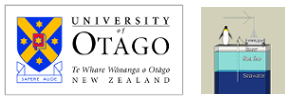Measuring Sea Ice Thickness
Sea ice thickness has traditionally been measured by drilling a hole, lowering a weighted tape measure through the hole, and pulling up on one end of a string. This is still the most reliable way of measuring sea ice thickness, and is used for checking on all other methods.
Sea ice thickness is difficult to measure directly from satellites because the salt trapped in the ice is highly reflective to radar. Devices that use electricity to induce movement of water under the sea ice can be used to measure sea ice thickness on sleds towed on the sea ice or hung under helicopters or aircraft flying over the sea ice. Devices that use sound reflection from underneath the sea ice are also sometimes used.
In this project, we get regular information on sea ice thickness by using temperature measurements. Our equipment has temperature measuring devices called thermistors spaced 10 cm apart inside a long, thin tube. When the thermistors are in the water, they will read around -1.9 degrees Celsius. As soon as sea ice forms at the depth of a thermistor, the temperature will decrease. This shows as a "step" in the dark red regions of the ice temperature graph.
From the times that these "steps" occur, we can work out how quickly the sea ice is growing.
